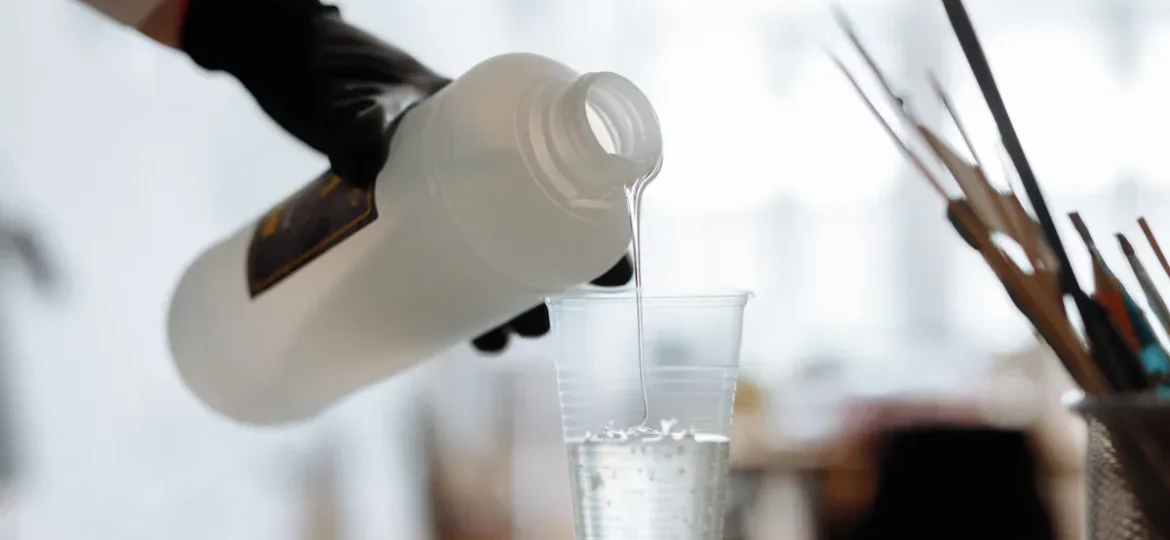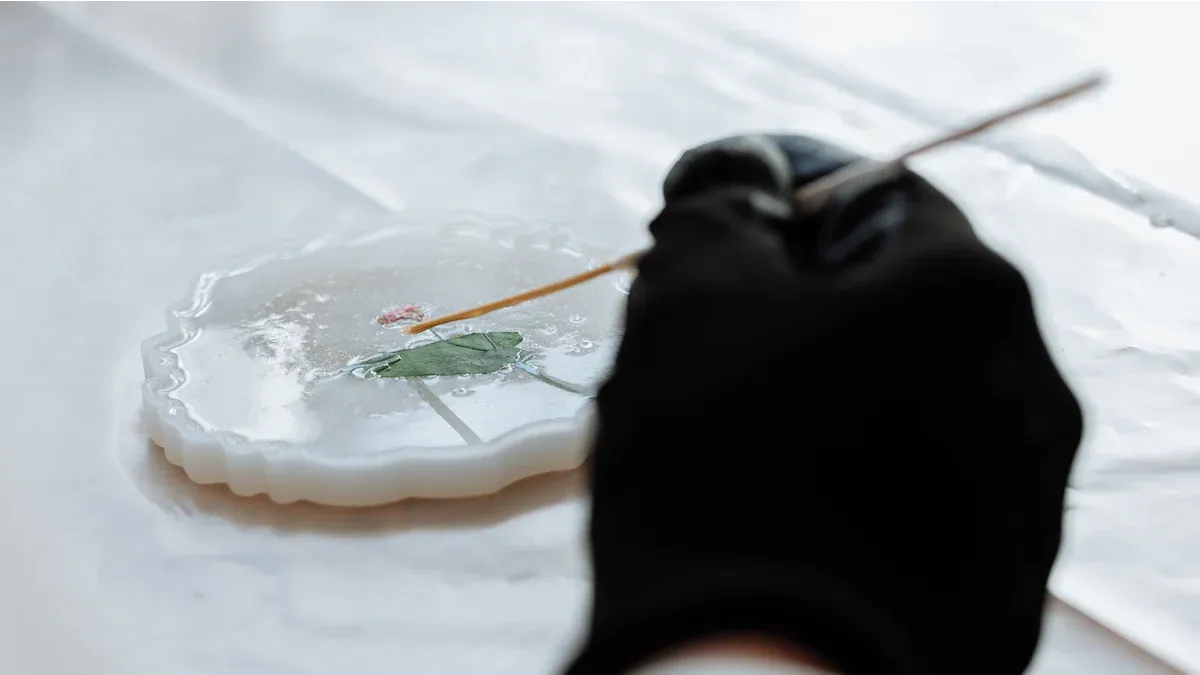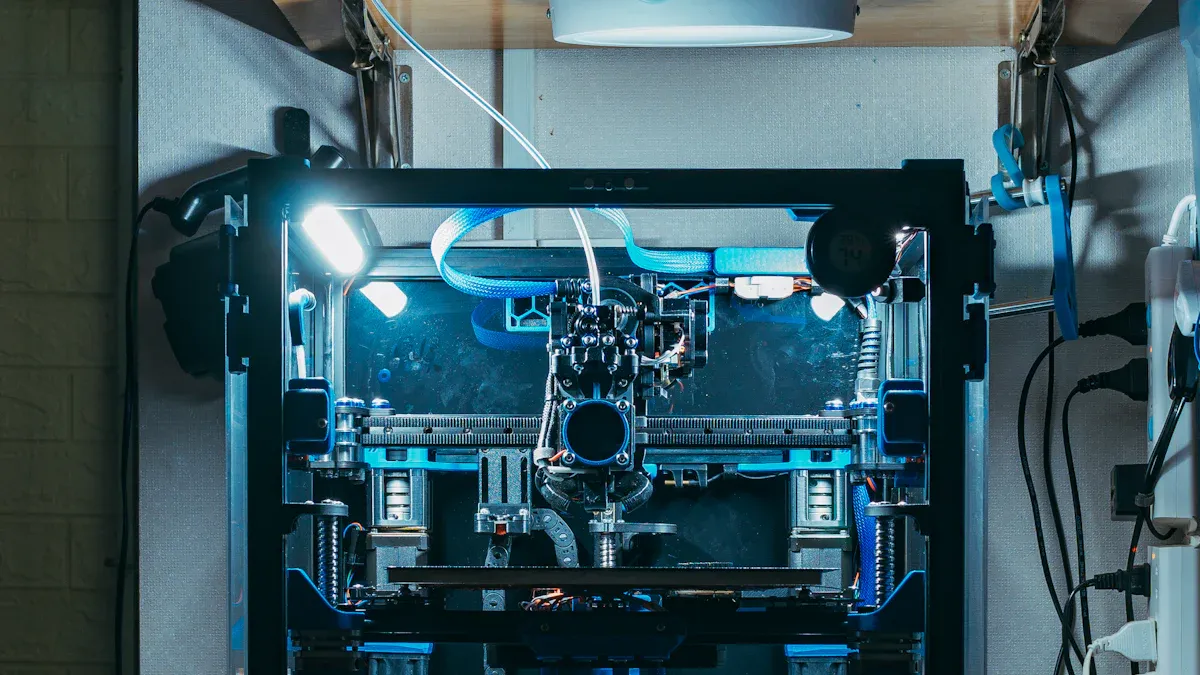

Casting Resin is a liquid that you pour into molds. It makes strong and tough parts for factories. You should know the science behind this material. This helps you pick the best product for casting projects. Science helps you see how different types make things stronger. It also helps with safety and makes your work more reliable.
Casting Resin Basics

What Is Casting Resin
Casting resin is a liquid you pour into a mold. It turns from a liquid to a solid after some time. Many factories use casting resin to make strong parts. You can also find it in art and jewelry. When you pour casting resin, it fills every part of the mold. This lets you make shapes with lots of detail. Some casting resin hardens fast, but others need more time. You pick the type that fits your project.
Tip: Always read the instructions for your casting resin. Each kind may need a special mix or different time to cure.
Why Science Matters
Knowing the science behind casting resin helps you get good results. How the resin hardens changes how strong it is. If you know about mixing and temperature, you can stop bubbles or weak spots. Science helps you choose the right resin for your job. Some resins work better in heat, and some resist chemicals. When you learn about casting resin, you make safer and better products. You also save time and money by making fewer mistakes.
- Learning resin chemistry basics helps you get better.
- You can pick the best resin for each job.
- You make stronger and better parts.
Understanding the science behind casting resin helps you do better in factories.
Resin Chemistry
Polymer Structure
You need to understand how the tiny parts inside casting resin work together. Each resin has long chains called polymers. These chains link up and form a strong network. When you pour resin into a mold, the liquid flows easily. The polymer chains move around and fill every space. After you start the curing process, these chains lock together. This makes the resin hard and tough. You get a solid part that can handle stress and pressure.
Polymers give casting resin its special features. You see better strength, clear surfaces, and good flexibility. Some resins use extra chemicals to make the chains even stronger. You can choose a resin with the right polymer structure for your project. If you want a part that bends, pick a flexible resin. If you need a part that stays strong in heat, choose a resin with heat-resistant polymers.
Note: The way polymers link up decides how well your finished part works in industrial manufacturing.
Curing Process
The curing process changes liquid resin into a solid part. You start curing by mixing two parts or by using heat or light. The resin curing step is very important. If you rush it, you might get bubbles or weak spots. You need to follow the instructions for time and temperature. Some resins cure fast, while others take longer. Epoxy coating resins often use a special hardener. This makes the curing process strong and reliable.
During curing, the polymer chains connect tightly. You get a part that resists chemicals and heat. Precision casting needs careful curing to make sure every detail comes out right. You should always check the curing time and method for your resin. Good curing gives you strong, safe, and long-lasting parts.
Tip: Always test a small batch before you start a big project. This helps you avoid mistakes and get the best results.
Key Properties
Impact Resistance
You need strong parts in many industrial manufacturing jobs. Impact resistance means your part can handle hits or drops without breaking. When you use casting resin, you get a material that spreads out the force from a sudden blow. This helps stop cracks and chips. You can trust casting resin for parts that face rough use or heavy loads.
- You can use impact-resistant resin for machine parts.
- You can make covers or housings that protect delicate tools.
- You can use it for molds that need to last a long time.
Tip: If you want even more strength, you can add special fillers or fibers to your resin mix. This makes your finished part even tougher.
Thermal Stability
Factories often get hot. Machines and tools can heat up during work. You need parts that do not melt or change shape when the temperature rises. Thermal stability means your casting resin keeps its shape and strength, even in high heat. You can use it for parts near engines or in places with big temperature swings.
Some resins work better in heat than others. You should check the product label for the highest safe temperature. If you pick the right resin, your parts will not warp or fail. This keeps your machines running and your work safe.
- Use thermally stable resin for electrical parts.
- Make molds for hot metal or plastic.
- Build parts for outdoor use where the sun can heat things up.
Note: Always test your resin in the real working temperature before making many parts.
Chemical Resistance
Many factories use strong cleaners, oils, or acids. Your parts need to stand up to these chemicals. Chemical resistance means your casting resin does not break down or lose strength when it touches harsh liquids. You can use it for tanks, pipes, or covers that face chemicals every day.
You should pick a resin that matches the chemicals in your workplace. Some resins resist acids, while others work better with oils or fuels. If you choose the right one, your parts will last longer and keep working well.
- Use chemical-resistant resin for storage tanks.
- Make trays or containers for lab work.
- Build parts for machines that use oil or fuel.
Alert: Always wear gloves and safety gear when working with chemicals and casting resin.
Formulation and Processing
Additives and Fillers
You can change how your resin works by adding special ingredients. Additives and fillers help you get the right strength, look, and performance for your project. You might use powders, fibers, or tiny beads. These materials make your resin tougher or lighter. Some fillers help your part resist heat or chemicals. Others make the surface smoother or add color.
You use additives to control how fast the resin cures. Some help you avoid bubbles or make the resin flow better. You can pick fillers that match your needs in industrial manufacturing. If you want a part that lasts longer, choose a filler that adds strength. If you need a part for precision casting, use fine powders for smooth details.
Tip: Always mix your additives and fillers slowly. Fast mixing can trap air and cause weak spots.
You can also use initiators. These chemicals start the resin curing process. You need the right amount for a strong and safe part. Too much initiator can make the resin cure too fast and cause cracks. Too little can leave your part soft or sticky.
Curing Methods
You need to cure your resin to make it solid and strong. There are different ways to do this. Some resins cure with heat. Others use light, like UV-curable resins. You can also use special hardeners for epoxy coating resins. Each method gives you different results.
If you use UV-curable resin, you shine a light on your part. The resin hardens quickly. This works well for small parts or thin layers. You save time and get a smooth finish. If you use heat, you place your mold in an oven. The resin cures slowly and becomes very tough. This method works for large parts in industrial manufacturing.
Epoxy coating resins need you to mix two liquids. One is the resin, and the other is the hardener. You pour them together and stir. The resin curing starts right away. You get a strong and durable part. This method works well for precision casting and parts that need to last a long time.
Note: Always follow the instructions for your curing method. The wrong temperature or time can ruin your part.
You can choose the curing method that fits your project. Fast curing helps you finish work quickly. Slow curing gives you better control and stronger parts. The right method helps you get the best results from your casting resin.
Industrial Applications


Manufacturing Uses
You see casting resin in many industrial manufacturing jobs. You can make machine parts, gears, and molds with it. The material gives you strong and detailed shapes. You use it for precision casting when you need exact sizes and smooth surfaces. Many factories choose casting resin because it resists wear and lasts a long time. You can add fillers to make parts tougher or lighter. Some companies use resin curing to get the right hardness for each part. You get reliable results when you follow the correct process.
Tip: Always test your finished part for strength before using it in machines.
Electronics
You find casting resin in electronics every day. You use it to protect circuit boards and wires. The resin keeps out water and dust. It also stops heat from damaging sensitive parts. Epoxy coating works well for covering connectors and sensors. You can shape the resin to fit small spaces. Many electronics makers use resin curing to seal parts quickly. You get safe and long-lasting devices when you use the right resin.
- Protect circuit boards from moisture.
- Cover sensors and connectors.
- Seal wires for safety.
Construction
You use casting resin in construction for many jobs. It helps you make strong floors and walls. You can repair cracks or fill gaps with it. The material stands up to heavy loads and weather changes. Builders use it for precision casting when they need smooth finishes. You can mix the resin with sand or stone for extra strength. Resin curing makes sure the finished part stays solid. You get safe and durable buildings when you choose the right resin.
Note: Always check the curing time before using resin in large projects.
Innovations and Trends
Material Advances
Factories now use new materials for casting resin. Scientists make smart resins that react to heat or light. These smart resins can fix themselves or change shape. You use them for precision casting to make detailed parts. Some new resins have nano-fillers. These tiny particles make parts stronger and lighter. Your parts last longer and work better in industrial manufacturing because of these advances.
Some resins cure faster than before. Quick resin curing helps you finish projects sooner. Companies use new epoxy coating formulas to protect parts. These formulas stop scratches and chemicals from hurting your machines and tools. You get safer and tougher products.
Note: Always test new materials before big projects. This helps you avoid problems and learn how the resin works.
Sustainability
Factories want to use materials that help the planet. More casting resin comes from plant-based sources now. These resins break down easier and make less waste. You help the environment by choosing eco-friendly options. Some companies recycle old resin parts to make new ones. This cuts down on trash and saves resources.
You can pick resins that use less energy to cure. These choices lower your factory’s power use. Some resins have fewer harmful chemicals. Safer materials protect workers and keep air clean. Using sustainable resin supports green manufacturing and helps your business follow new rules.
- Choose plant-based resin for eco-friendly projects.
- Use recycled resin to cut down on waste.
- Pick low-energy curing methods to save power.
Tip: Ask your supplier about green casting resin options. Small changes can make a big difference.
Science helps make casting resin work well in factories. If you mix it right and cure it carefully, your parts get strong. Epoxy coating and precision casting help with hard jobs. Picking casting resin gives you safer and better results. You should look for new ideas and green choices. Knowing more helps you choose the best resin each time.

